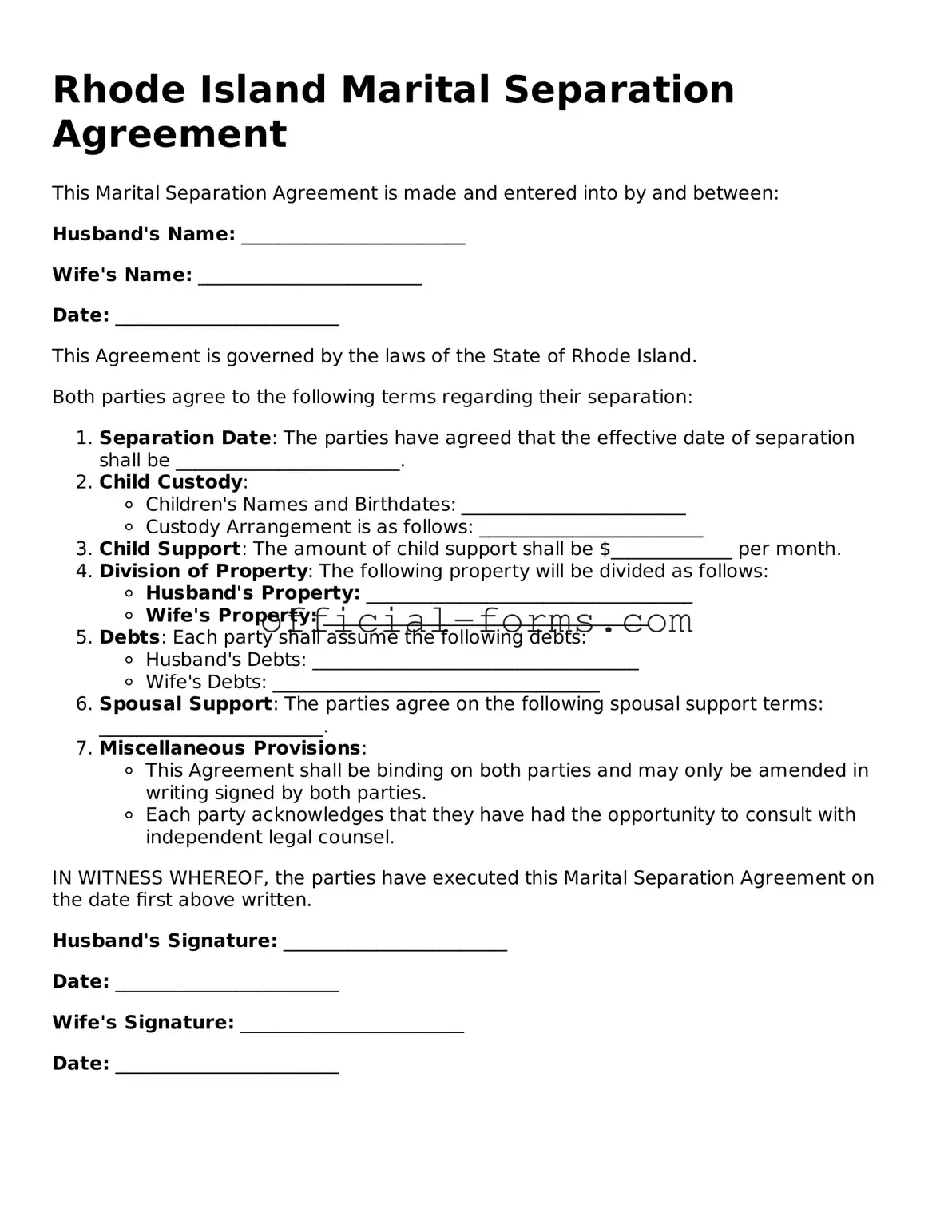Official Rhode Island Marital Separation Agreement Document
The Rhode Island Marital Separation Agreement is a legal document that outlines the terms and conditions agreed upon by spouses who wish to live separately while remaining legally married. This form serves as a critical tool for addressing various aspects of marital separation, including property division, child custody, and financial responsibilities. Understanding its components can help couples navigate this challenging transition with greater clarity and fairness.
Open My Marital Separation Agreement Now
